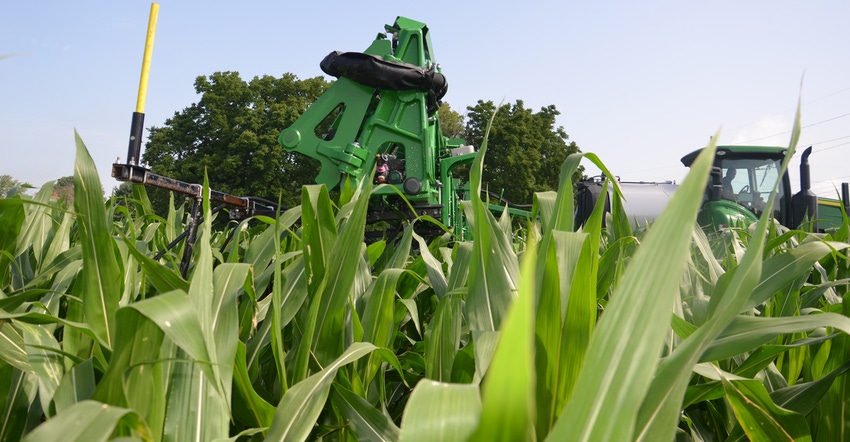
Mike Starkey’s approach to nitrogen application for corn has changed over time. He points to three key turning points. The final piece, what he calls the “missing link,” fell into place this year when he contracted with AirScout for aerial flights.
“It really started when people convinced me today’s racehorse hybrids use lots of nitrogen, and they use a higher percentage of it later in the season,” says Starkey, Brownsburg, Ind. He credits Jim Schwartz, director of Beck’s Practical Farm Research program, with helping him understand how much today’s hybrids have changed.
“They’re not like the hybrids my dad grew,” Starkey says. “Many of today’s hybrids will respond to nitrogen later in the season compared to hybrids of 30 or 40 years ago.”
The second turning point happened during discussions with fellow no-tiller Rodney Rulon, who farms in Hamilton County, Ind. “My practice was applying more N on lighter soils that don’t supply as much N themselves, and apply less nitrogen on darker, better soils,” Starkey explains. “The logic was to bring up yields on lighter, lower-yielding soils.
“Rulon convinced me that’s backward. Lighter soils will only produce so much, no matter how much nitrogen you apply. So, it makes more sense to apply more nitrogen on better soils, which can produce even more corn in years with favorable weather conditions. Those are the areas where the yield monitor jumps into the high 200s or even hits 300 bushels per acre.”
Missing link
So, Starkey shifted his goals to apply the most nitrogen on the best soils and apply a portion later in the season, especially if the crop looks good. He used a variety of factors to arrive at management zones, but he still felt like he wasn’t differentiating high-yield potential areas as accurately as he could.
Then he learned about AirScout. Operated by Brian and Dan Sutton, Lowell, Ind., it’s a service that provides various images from aerial flights over your farm for a fee. They charge on a per-acre basis, and the only restriction is that you must enroll whole fields.
“They flew my fields 10 times by late July, starting with a bare-soil flight,” Starkey says. “In my case, there was already vegetation early because I grow cover crops.”
Starkey says results arrive on his computer or tablet within 24 hours. He gets a thermal image, an Advanced Difference Vegetation Index image, a Normalized Difference Vegetation Index image and a visual shot of the field.
“What it let me do was more accurately identify where my best-producing, highest-yield-potential areas were within corn fields,” he explains. “I applied nitrogen with the planter, sidedress at a flat rate with the sprayer and Y-drops at V6, and then with my sprayer and Y-drops in July.
“Using the AirScout images, I prepared prescription maps for the last application, varying rates from 7 gallons per acre of UAN on lighter soils to 35 gallons per acre on the best locations.”
That gave him a late-season rate of 20 to 110 pounds per acre of nitrogen on the last pass, and total season rates of 155 to 240 pounds of nitrogen per acre.
The story will continue this fall when Starkey harvests these fields. He’s confident that if the weather cooperates, applying more nitrogen on spots that looked best in July will pay off.
About the Author(s)
You May Also Like




